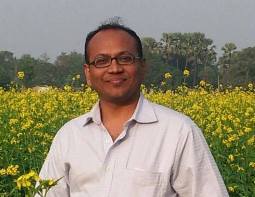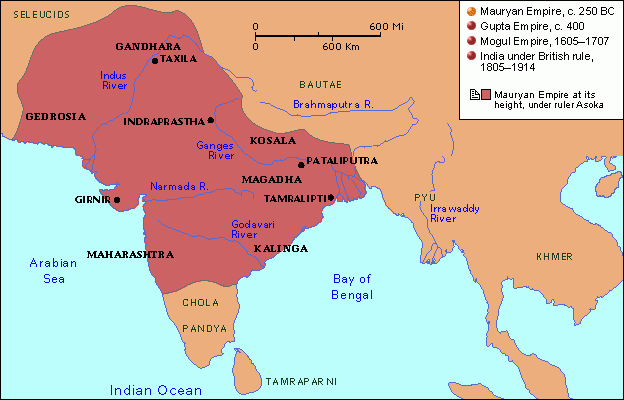 By Ravi Kumar, Founder Modlingu Group and President, Indian Translators Association
By Ravi Kumar, Founder Modlingu Group and President, Indian Translators Association
Nation Building” has always been linked to national integration and the creation of national identity. For a country like India, it is a very delicate and challenging matter to deal with the national identity that derives its strength from multiple layers of social, political, religious, economic, cultural, ethnic and linguistic diversity. However, the communication gap which inevitably arises out of such a diversity of boundaries is constantly being bridged by the people themselves, whose day to day reality is, for the majority, living in a multi-cultural society and interacting in a multilingual manner.
We should not forget that the concept of the nation-state is not an ancient or indigenous one but a notion imported relatively recently from Europe in the 18th and 19th centuries. The United Kingdom only became “united” through the Act of Union in 1702 when England (and Wales) and Scotland merged politically. We should acknowledge that when America famously declared independence from Britain in 1776, this fledgling state initially contained only a tiny fraction of the area it has today. Similarly, Italy and Germany were not unified until the middle of the 19th century.
In India, the impact of this colonial myth has been that many educated people accept that the idea of India as a nation is a British creation. However, a detailed study of linguistic history reveals that Bhartiyata (Indianness) is not by any means a recent phenomenon; it is deeply rooted in its citizens across the country since ancient times.
It was, we might argue, the existence and subsequent translation of the great Indian classics that acted as a catalyst in creating a pan-Indian ethos. Epics – especially the Ramayana and the Mahabharata - have been translated into almost all regional languages. Cutting across religious beliefs, the legends of Rama and Krishna have stirred the minds of Indians living in almost all corners of India. These myths, whose nature is patently nationalistic, were made available to the Indian population through translation, without which it is inconceivable that the deeply entrenched cultural and linguistic boundaries within India could have been bridged.
It is very difficult to ascertain the dates of Ramayana and Mahabharata. However, most of the historians seem to have concluded that Ramayana existed before Mahabharata. Historians and experts believe that verses of Ramayana existed in India in various layers and spans which passed from one generation to another for thousands of years through oral traditions, and that it was Maharishi Valmiki who compiled seven volumes of it consisting of 24,000 verses in Sanskrit that tell the story of Rama (an incarnation of the Hindu God Vishnu), whose wife Sita was abducted by the demon King of Lanka, Ravana.
Thematically, the epic explores the tenets of human existence and the concept of dharma. It contains the teachings of ancient Hindu sages and presents them in narrative allegories with philosophical and devotional elements interspersed. The characters like Rama, Sita, Lakshmana, Bharata, Hanuman and Ravana are all fundamental to the cultural consciousness of India, i.e. the epic became so popular and universal that it crossed over the boundaries of Brahminical temples and got embedded in the psyche of Indian population cutting across all strata and layers of caste system that even today remain deeply rooted in India.
It is very important to note that in the ancient period the purpose of translation was totally different than what we perceive today. In most of the times Sanskrit text used to be changed in the form (rupantar) into several languages (bhashantar) or they were called anuvad (coming after or following after). This meant less emphasis on maintaining originality of source text, therefore, a translator may not be faithful to the original text at all.
As in many oral epics, multiple versions of the Ramayana survive. Ramayana has also inspired much secondary literature in various languages, notably the Kambaramayanam by the Tamil poet Kambar of the 13th century, the Telugu-language Molla Ramayana, 14th century Kannada poet Narahari's Torave Ramayan, Kotha Ramayana in Assamese by the 14th century poet Madhava Kandali and 15th century Bengali poet Krittibas Ojha's Krittivasi Ramayan, as well as the 16th century Awadhi version (near Hindi), Ramacharitamanas, written by Tulsidas. Similarly, Gujarati poet Premanand wrote a version of Ramayana in the 17th century. Other versions include Oriya version by Balarama Das in the 16th century, in Marathi by Sridhara in the 18th century, etc.
It is very interesting to note that Ramayana narrated in North India differs in important aspects from the one preserved in South India and the rest of South-East Asia. There is an extensive tradition of oral storytelling based on the Ramayana in Indonesia, Cambodia, Thailand, Malaysia, Laos, Vietnam, and Maldives. Father Kamil Bulke, the author of Ramakatha, has identified over 300 variants of Ramayana.
There is a sub-plot to Ramayana, prevalent in some parts of India, relating the adventures of Ahi Ravana / Mahi Ravana, the evil brother of Ravana, which enhances the role of Hanuman in the story. Hanuman rescues Rama and Lakshmana after they are kidnapped by the Ahi/Mahi Ravana at the behest of Ravana and held prisoner in a subterranean cave to be sacrificed to Goddess Kali.
Mappillapattu—a genre of song popular among the Muslims belonging to Kerala and Lakshadweep—has incorporated some episodes from the Ramayana into its songs. These songs, known as Mappila Ramayana, have been handed down from one generation to the next orally. In Mappila Ramayana, the story of the Ramayana has been changed into that of a Sultan and there are no major changes in the names of characters except for that of Rama which is `Laman' in many places. The language and the imagery projected in the Mappilapattu are in accordance with the social fabric of the earlier Muslim community.
The Ramayana became popular in Southeast Asia during the 8th century and was represented in literature, temple architecture, dance and theatre. Today, dramatic enactments of the story of Ramayana, known as Ramlila, take place all across India and in many places across the globe within the Indian Diaspora.
Parallel with Ramayana, Mahabharata is another equally important great epic first written in Sanskrit by Ved Vyas that has reached almost all corners and veins of India. Besides its epic narrative of the Kurukshetra War and the fates of the Kauravas and the Pandavas, the Mahabharata contains much philosophical and devotional material, such as a discussion of the four "goals of life" or purusharthas. The latter are enumerated as dharma (right action), artha (purpose), kama (pleasure) and moksha (liberation). Mahabharata has enjoyed references on a continuous basis both in literary and popular culture of India, since ancient times. Several stories within the Mahabharata have been debated so intensely that they have taken separate identities of their own. For instance, Abhijñānashākuntala by the renowned Sanskrit poet Kālidāsa (ca. 400 CE), believed to have lived in the era of the Gupta dynasty, is based on a story that is the precursor to the Mahabharata.
Bhagavad Gita, the integral part of Mahabharta needs a special mention for its message to the mankind. The message of Bhagavad Gita is that either you can perform your actions with attachment thinking that you are the doer or you can perform the same without attachment by thinking that God/Nature is performing the actions. This unattached performance of actions has been called Yagya or Karma Yog in the Gita. Those who perform their actions for the sake of Yagya or by way of Karma Yog will be freed from the bonds of actions. They will be freed from the attributes of Sattav, Rajas and Tamas (purity, passion and delusion) and attain the supreme Bhava of God, which will make them imperishable beings. They will be freed from sorrow, old age and death and will attain immortality. This unattached performance of actions is the true Karma which will not only fulfill all desires but will also transform us and make us one with God. This thought that perhaps originated 5000 years before has relevance even in today’s modern world, and that is the reason why its universality has been maintained through various ages and in various languages.
At a much later stage when Jainism and Buddhism started flourishing in India, say around 600 B.C. onwards, the religious texts and teachings first reached in different corners of India in Pali-Sanskrit which was simultaneously translated and appropriated in various Indian languages (bhasha).
In 230 B.C. during Maurya rule, Buddhism received a great impetus when King Ashoka after having won various wars underwent untold sufferings, especially after his victory over Kalinga, and then embraced Buddhism after renouncing war forever. Ashoka’s patronage of Buddhism played a great role in having a profound influence on the Indian subcontinent and beyond. It began with his practical approach towards the humane ideals. In his zeal to propagate peace, he dispatched Buddhist emissaries to Burma, Ceylon, Afghanistan, Nepal, Mesopotamia, Syria, China, Tibet, Egypt, Persia and Macedonia. Moreover, he is said to have sent his son Mahindra’s daughter Sanghamitra to Ceylon to spread Buddhism. During this period, the Buddhist scriptures were widely translated into Indian Bhashas and languages of neighbouring countries as well. The popularity of Buddhism under the Mauryas led to the establishment of many Buddhist centres at places like the present day Andhra Pradesh, Maharashtra, Kashmir, Madhya Pradesh, Varanasi, Orissa, Mysore and Karnataka.
Ashoka’s policy of Dhamma, which encapsulated all the moral and social virtues for the common good and his direct patronage were responsible for the widespread popularity of Buddhism. Assuming the title “Devanampriya” (Beloved of the Gods), several rock and pillar edicts of his Dhamma or the law of piety issued by Ashoka were erected. These included the co-existence and toleration of all walks of life and also very clear indication of nationhood and national identity. Also, the spread of Buddhism under this Mauryan Emperor is believed to have greatly influenced the religious history of South-east Asia. The spread of Buddhism beyond the borders of Indian subcontinent during the Mauryan period ensured its survival even after Buddhism lost hold after the Muslim conquest and the revival of Hinduism.
Whatever may be the purpose or practice of translation, call it rupantar, bhashantar or anuvad, it is important to note that this activity has been going on in India since ages and that it has always helped the Indian population to maintain unity in diversity. Indianness may not only be looked through unity of geographical locations which already exists in the Indian subcontinent by default, it may also be looked through the spiritual space that has been binding it as a nation where geographical locations work as body and the spiritual space as soul.
To understand this unity that may be equated with nationhood or supra-nationhood in the Indian case, if we take into account the details given by foreign travellers of that time, who were translators and the real ambassadors who helped in translation and dissemination of information from one language to another, one culture to another, one nation to another; it becomes easier to understand that today’s Indian sub-continent was already united as one nation consisting of several mini nations.
Megasthenese (c. 350 BC-290 BC) was a Greek traveler and geographer, a friend and companion of Seleucus Nicator, the Greek Monarch who sent him as an ambassador to Sandracottus (Chandragupta), King of Prasii, whose capital was Palibothra (Patataliptra), a town near the confluence of Ganges and Sone in the neighbourhood of the modern Patna. Megasthenese was the first westerner to provide an eyewitness description of the Gangetic plains and the people of India, the time when Chandragupta’s power was at its zenith, and much later whose grandson Ashoka expanded the Mauryan empire to a much larger area than before.
Fa-Hien (c.399–414 AD), a Chinese Buddhist monk who initiated relations with India in 399 AD, eager to learn about his religion at its source, spent a decade visiting the major Buddhist shrines and seats of learning, especially sites in eastern India, including Kapilavastu, Bodh Gaya, and Pataliputra. He deepened his knowledge by conversing with monks and gathered sacred texts that had not yet been translated into Chinese. He returned to China by sea in 412, after spending two years in Sri Lanka. His Record of Buddhist Kingdoms contains valuable information about Indian Buddhism as well as Indian political and cultural scenario of this era.
Huen–Tsang (c.602–664), was a famous Chinese Buddhist monk, scholar, traveler, and translator who described the interaction between China and India in the early Tang period. Like Fa-Hien, he too was concerned about the incomplete and misinterpreted nature of the Buddhist scriptures that reached China. He decided to go west to India, the cradle and thriving center of Buddhism itself where he spent 17 years traveling, visiting places associated with the Buddha's life, learning Sanskrit and studying with Buddhist masters, most notably at the famous Nalanda University. He gathered hundreds of Sanskrit texts (sutras) in order to bring them back with him. Many of them got destroyed en route but he still managed to bring back 657 books. Upon his return and for the remaining 19 years of his life, Huen–Tsang worked with a team of linguist monks to translate many of the 657 books and wrote a commentary on them. He also published an account of his travels which is now a precious historical record and which provided the inspiration for the epic novel Journey to the West.
The map in the next paragraph explains the extent of 03 great empires of Indian span into three different time zones. The Mauryan empire at around 250 B.C, the Gupta Empire at around 400 AD, and the Mughal empire from 1600 to 1700 AD.
 In medieval period specially during the Mughal Period which was established in north India in the 16th century brought about tremendous literary activity. Languages like Persian, Sanskrit, Hindi and Urdu saw tremendous creative activity as did many vernacular languages. The contributions of the Mughals can be divided into three categories: historical works, translations, poetry and novels. The important historical works written in this time were Ain-i-Akbari, and Akbarnama by Abul Fazl, the Ta'rikh-i-'Alfi by Mulla Daud. Akbar, though not educated in any formal educational institution, could contribute much to literature. Jehangir possessed a keen interest in literature, and his autobiography is one of the finest amongst the Mughal emperors. During his reign, important historical works like Ma'asir-i-Jahangir, Iqbalnamah-i-Jahangiri and Zubud-ut-Tawaikh were written. Many important works in translation were also written during this period, with the translation of the epics, the Mahabharata and the Ramayana taking place. Many of the Vedas were also translated and several previous historical books were also translated. All this translation added to the wealth of Indian literature and spread ancient knowledge to a greater audience. This renewed interest in Indian literature would be an important tool used by the social reformers of the eighteenth century to educate the people about what the ancient texts really said as opposed to the distorted interpretations that were being followed. One of the fine Hindu works composed during this time was Ramcharitmanasa (the life of Rama) by Tulsidasa, which was a simplified version of the Ramayana.
In medieval period specially during the Mughal Period which was established in north India in the 16th century brought about tremendous literary activity. Languages like Persian, Sanskrit, Hindi and Urdu saw tremendous creative activity as did many vernacular languages. The contributions of the Mughals can be divided into three categories: historical works, translations, poetry and novels. The important historical works written in this time were Ain-i-Akbari, and Akbarnama by Abul Fazl, the Ta'rikh-i-'Alfi by Mulla Daud. Akbar, though not educated in any formal educational institution, could contribute much to literature. Jehangir possessed a keen interest in literature, and his autobiography is one of the finest amongst the Mughal emperors. During his reign, important historical works like Ma'asir-i-Jahangir, Iqbalnamah-i-Jahangiri and Zubud-ut-Tawaikh were written. Many important works in translation were also written during this period, with the translation of the epics, the Mahabharata and the Ramayana taking place. Many of the Vedas were also translated and several previous historical books were also translated. All this translation added to the wealth of Indian literature and spread ancient knowledge to a greater audience. This renewed interest in Indian literature would be an important tool used by the social reformers of the eighteenth century to educate the people about what the ancient texts really said as opposed to the distorted interpretations that were being followed. One of the fine Hindu works composed during this time was Ramcharitmanasa (the life of Rama) by Tulsidasa, which was a simplified version of the Ramayana.
Travellers who generally used to travel in the quest of knowledge from one corner to another corner of country have contributed a lot to translation activities. Many times they used to cross boundaries of their country (or linguistic regions) to learn new language(s) and used to contribute towards democratization of information through translation. Out of many such travellers, Ibn Battuta is one of the world's greatest travelers, traveled an enormous distance of 75,000 miles after having left Tangier, Morocco with the intention of performing Hajj (the pilgrimage) to Mecca only to return thirty years later at the court of Sultan Abu 'Inan and dictated accounts of his journeys, known as the famous Travels (Rihla) of Ibn Battuta covering several adventures in African deserts, Indian countries (states) and islands in far east and China. He spent seven years at the court of Mohammed Bin Tughluk as a judge and finally as ambassador to China. He has given a wonderful record of socio-religious life of the places he visited which includes coastal Karnataka and southern part of India.
Ibn Battuta was the only medieval traveler who is known to have visited the lands of every Muslim ruler of his time. He also traveled to Ceylon (present Sri Lanka), China and Byzantium and South Russia. The mere extent of his travels is estimated at no less than 75,000 miles, a figure which is not likely to have been surpassed before the age of steam.
Some of the non religious books have also played major role in creating common psyche of the masses. The book Panchtantra is one of them which is known for its universal message. It was originally written in Sanskrit, probably in Kashmir, sometime in the 4th century A.D. Two hundred years later, a Persian Shah got it translated into Pehlavi, a form of Old Persian and liked it so much that he enshrined the translation in a special room of his palace. Three hundred years later, after the Muslim conquest of Persia and the Near East, a Persian convert to Islam named Ibn al-Mukaffa’ chanced upon the Pehlavi version and translated it into Arabic as Kalila wa Dimna in a style so lucid that it is still considered a model of Arabic prose. It was so entertaining, however, that it proved popular with all classes, entered the folklore of the Muslim world and was carried by the Arabs to Spain. There it was translated into Old Spanish in the 13th century. In Italy, it was one of the first books to appear after the invention of printing. Later, it was also translated into Greek and then into Latin, Old Church Slavic, German and other languages. The Arabic version was translated into Ethiopic, Syriac, Persian, Turkish, Malay, Javanese, Laotian and Siamese. In the 19th century it was translated into Hindustani, thus completing the circle that began 1,700 years before in Kashmir. Not all versions were simple translations. The book was expanded, abridged, versified, disfigured and enhanced by a seemingly endless series of translators.
Bhakti movement in India also played important role in creating oneness. The Bhakti movement in India took place as an effort to inculcate loving devotion and belief in God. It aimed at the principle of monotheism, i.e. existence of one God. It started in the south of India and slowly spread to north India during the later half of the medieval period in the history of India (800-1700 A.D). The real essence of Bhakti is found in great epics like Mahabharata and Ramayana. The Vedic scriptures also talk about the concept of pure devotion of God. Many saints and devotional preachers led the Bhakti movement in different parts of the country. They believed in the fact that true knowledge can be achieved only through selfless devotion and worship of the Supreme Power. The Bhakti movement of the Vaishnavaites and that of the Shaiva were simultaneous and started almost together.
The Bhakti movements started then, have left an indelible mark in human beliefs and faiths. This movement started the trend of elaborate rituals in worship places. Devotional hymns in Temples, Qawalli in Mosques, Gurbani in Gurudwaras, etc. all came from the Bhakti movement. Chanting or taking the name of God was considered essential by many saints including the great Adi Shankaracharya. The significance of Bhakti movement was that it could be accessed by anyone, since all it needed was to remember God with full devotion and love. The esteemed philosophical schools only changed the thoughts, but the Bhakti movement changed the entire perspective of a human being. It went beyond artificial beliefs and rituals and encouraged people to have complete faith in the Almighty. The Bhakti movement in India produced a rich collection of literature based on devotion, spirituality, faith and incorporated numerous devotional hymns and chants.
As per the thoughts of R.S Pathak “the poets of the Bhakti period in India were translators in a different and loose sense, as they strove to translate Indian knowledge and wisdom manifested in different treatises through Sanskrit by appropriating it in various Indian Bhashas". In words of G.N. Devy medieval translation aimed at liberating the society. (Devy, 1993)
The post Bhakti Movement of Indian literature took a sharp turn in the latter Mughal era in India classified as ‘Reeti Kaal” or a style-oriented period in which poets and laurels put much emphasis on style of expression than on the purity of content. Naturally, this also impacted the trend of translation. Krishna and Radha became the centre of romantic and, sometimes even sensual, poesy and expressions. Such literature even reached South India and further countries like Iran and Afghanistan through Persian translations.
The dying Mughal empire could not add much to maintain oneness of national geographical boundaries, however, the translators and intellectuals continued to play crucial role in maintaining religious beliefs, and universal legends and ethos whose nature was always nationalistic.
Upon arrival of British in India, the role of literature and translation took a U turn. The British period took away even the ‘stylish’ approach of translation and made it a tool for administration and imperialism. English language was introduced to bring ideas and thoughts from west, and it was imposed as language of the administrative class. The concept of ruptantar or bhastantar slowly faded into administrative translation that served the British interests. New legal terms and administrative glossaries evolved which became part and parcel of the British law and order. The British period was also the period of the great Industrial Revolution that started from England and soon enveloped the entire globe. New machines were made and it was the beginning of an age that we term today as ‘globalization’. The markets spread, consumer-oriented services bloomed and the language had to assume a new role – to cater to the socio-economic needs of multitudes of people.
- References
1. Kumar, Ravi, Language and Translation Industry of India: A Historical and Cultural Perspective, Shanghai, XVIII FIT world Congress, 2008 - 2. Kumar, Ravi, The life of a Translator in India, London, ITI Bulletin, the Journal of the Institute of Translation & Interpreting, 2010
- 3. Kumar, Ravi, The Translator as an Entrepreneur: An Indian Perspective, Salt Lake City, USA, American Journal of Translation Studies, 2010
- 4. Das, Binay Kumar, A handbook of Translation Studies. New Delhi, Atlantic Publishers, 2005
- 5. Oustinoff, Michaël, Translation Matters: India as a model for Europe, during International Conference on Role of Translation in nation building and supra nationalism, Indian Translators Association, New Delhi 2010
- 6. Devy, G.N. Devy, “Translation Theory: An Indian Perspective,” Into Another Tongue. Madras: Mac Millian, 1993
- 7. Vasandani, Nirupama Rastogi, The translation initiative: Teaching and Training, Hyderabad, Central Institute of English and Foreign Language, 2000
- 8. Mahapragya, Acharya and Abdul Kalam, A.P.J, The Family and the Nation, New Delhi, Harper Collins Publishers, 2008
- 9. Nijhawan, Shobna, Nationalism in the Vernacular, Ranikhet, 2010





